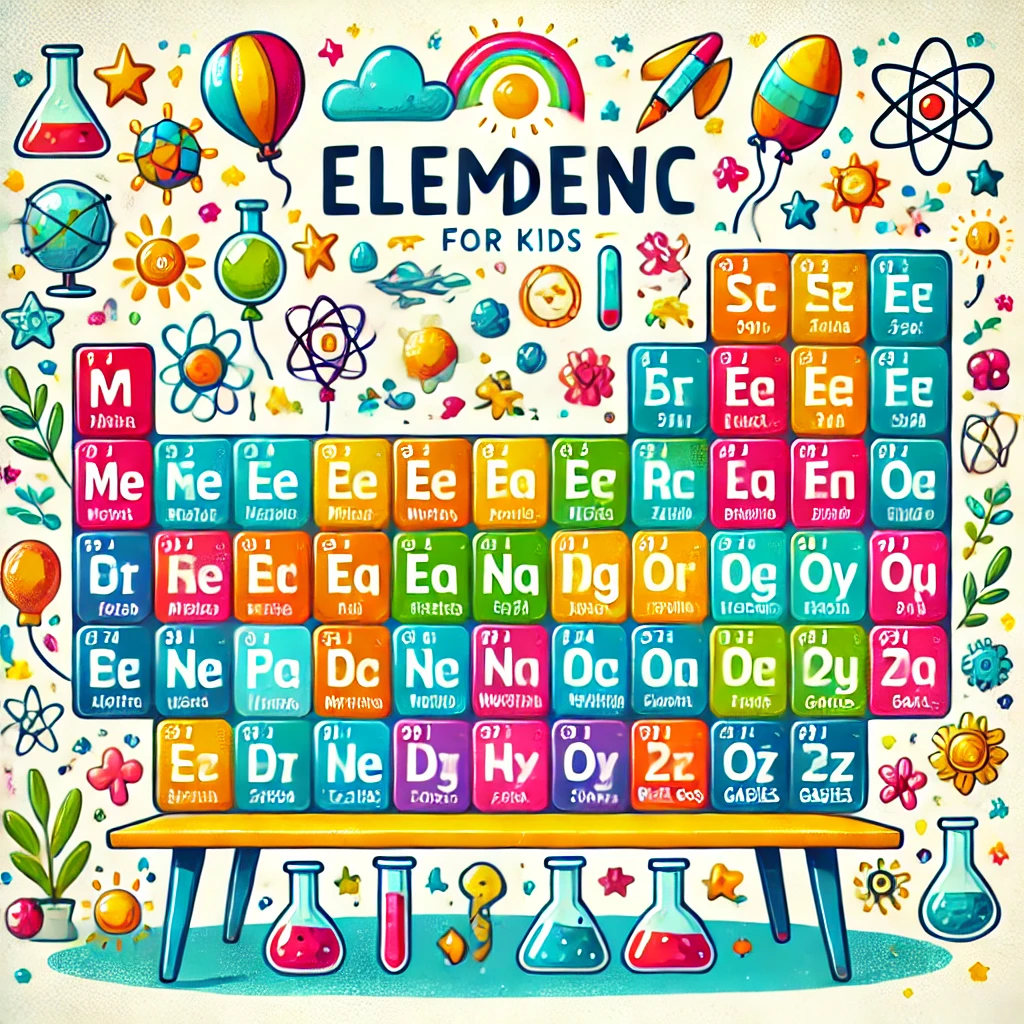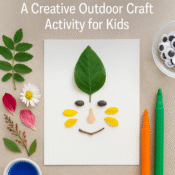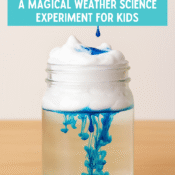
Fun and Engaging Periodic Table Colouring Activities
Imagine the periodic table as a rainbow of discovery! Ever wondered how to make science fun and memorable? Well, grab your colouring pencils because we’re about to embark on a vibrant journey through the elements. The periodic table isn’t just a boring chart—it’s the blueprint of everything around us! It organises all the building blocks of our world into neat little boxes, each with its own personality. But let’s face it, memorising all those symbols and numbers can be a right pain. That’s where our colourful adventure comes in. By adding a splash of creativity to chemistry, we’ll turn that daunting table into a masterpiece you’ll never forget. Ready to paint your way through the periodic table?
Unleash the Fun: Colouring the Periodic Table
Get ready to embark on a colourful journey through the elements! Periodic table colouring is not just a fun activity—it’s a brilliant way to make chemistry come alive. Let’s dive into how you can transform this scientific chart into a vibrant masterpiece.
Grab Your Supplies
First things first, you’ll need a blank periodic table template. Don’t worry; there are loads of free printables online designed specifically for colouring. Once you’ve got your template, gather your favourite colouring tools. Coloured pencils, markers, or even watercolours—the choice is yours!
Colour-Coding Magic
Now, here’s where the real fun begins. You can colour-code elements based on their properties:
- Use cool blues for metals that conduct electricity
- Warm yellows for non-metals
- Soft purples for noble gases that don’t react easily
Remember, there’s no right or wrong way to do this. Let your creativity flow!
Beyond the Basics
Why stop at simple colouring? Take your periodic table to the next level:
- Add stickers or small drawings to represent each element’s real-world uses
- Create a gradient effect to show how atomic numbers increase
- Use patterns like stripes or dots to highlight different element groups
As you colour, you’ll start noticing patterns and relationships between elements. It’s like a hidden map of chemistry unfolding before your eyes!
Learn While You Create
Colouring isn’t just about making things pretty. It’s a brilliant way to boost your memory and understanding of the elements. As you fill in each square, take a moment to learn a fun fact about that element. Did you know that helium can make your voice squeaky, or that gold never rusts?
By the time you finish your masterpiece, you’ll have a deeper appreciation for the amazing world of chemistry—and a beautiful, personalised periodic table to show for it!
The Science Behind the Colours: Boosting Memory and Understanding
When it comes to periodic table colouring, there’s more than meets the eye. This vibrant activity isn’t just about making your chart look pretty—it’s a powerful tool for boosting memory and understanding complex scientific concepts.
Colour-coding for better recall
Your brain loves colour. It’s not just a preference; it’s science! When you engage in periodic table colouring, you’re creating visual cues that help your mind organise and recall information more easily. By assigning specific colours to different element groups or properties, you’re building a mental map that makes navigating the periodic table a breeze.
For instance, colouring all metals in shades of grey or silver can help you quickly identify this large group of elements. Similarly, using bright yellows or greens for non-metals creates a stark contrast, making it easier to distinguish between these fundamental categories.
Engaging multiple senses
Periodic table colouring isn’t just a visual exercise—it’s a multi-sensory experience. As you colour, you’re not only seeing the elements but also physically interacting with them. This hands-on approach engages your motor skills, creating stronger neural connections and enhancing your learning process.
Moreover, the act of choosing colours for each element encourages you to think critically about their properties and relationships. It’s a subtle way of reinforcing your understanding of the periodic table’s structure and trends.
From abstract to tangible
Let’s face it—the periodic table can seem a bit abstract at first glance. All those symbols and numbers can be overwhelming. But when you start colouring, you’re transforming this scientific tool into something more tangible and personal.
By adding your own creative touch, you’re building a unique connection with the elements. Suddenly, Neon isn’t just Ne—it’s that bright pink element that lights up signs. Uranium isn’t just a heavy metal; it’s the deep green element that powers nuclear energy.
Through periodic table colouring, you’re not just memorising facts; you’re creating a vivid, memorable representation of the building blocks of our universe. So grab those colouring pencils and let’s make chemistry come alive!
Combining Art and STEM: The Benefits of Periodic Table Colouring
Periodic table colouring is more than just a fun pastime—it’s a brilliant way to merge art and science, making learning a vibrant adventure! Let’s explore why this activity is a game-changer for budding scientists and artists alike.
Boosting Memory and Understanding
When you engage in periodic table colouring, you’re not just filling in blank spaces. You’re creating a visual map that helps cement element positions, groups, and trends in your mind. The act of choosing colours and applying them to different sections reinforces your understanding of element relationships. For instance, colouring all noble gases in shades of purple can help you remember their unique properties and position on the right side of the table.
Encouraging Hands-on Learning
There’s something magical about getting your hands dirty (or colourful, in this case). By physically interacting with the periodic table, you’re more likely to retain information than by simply reading or memorising. It’s a tactile experience that engages multiple senses, making the learning process more enjoyable and effective.
Fostering Creativity in Science
Who says science can’t be creative? Periodic table colouring allows you to express your artistic side whilst exploring chemical concepts. You might choose to colour elements based on their reactivity, using warm colours for more reactive elements and cool colours for stable ones. Or perhaps you’ll create a gradient effect to show the increase in atomic numbers across periods. The possibilities are endless!
Bridging the Gap Between Disciplines
By combining art and science, periodic table colouring helps break down the artificial barriers between subjects. It demonstrates that creativity and analytical thinking can go hand in hand, encouraging a more holistic approach to learning. This interdisciplinary activity can spark interest in both art and chemistry, potentially inspiring future careers in fields like scientific illustration or materials science.
So, grab those colouring pencils and get ready to turn the periodic table into your personal masterpiece. It’s time to make chemistry colourful!
Getting Started: Finding the Perfect Periodic Table Template
Ready to embark on your periodic table colouring adventure? Let’s kick things off by finding the ideal template to work with. After all, a great masterpiece starts with a solid foundation!
Exploring Online Resources
The internet is a treasure trove of periodic table templates just waiting to be discovered. Websites like Education.com and ScienceNotes.org offer a variety of free, printable periodic table colouring sheets. These range from simple outlines perfect for younger children to more detailed versions for older students or adults looking to dive deeper into element properties.
Don’t forget to check out teacher resource sites and science education blogs. They often have unique periodic table colouring templates that incorporate fun themes or additional learning elements.
Customising Your Template
Can’t find exactly what you’re after? Why not create your own? Start with a basic periodic table outline and add the elements or details you want to focus on. This approach allows you to tailor the periodic table colouring activity to your specific learning goals or interests.
For the tech-savvy, graphic design tools like Canva or Adobe Illustrator can help you craft a bespoke template. You could even involve the kids in the design process, making the activity even more engaging from the get-go.
Choosing the Right Complexity
When selecting your periodic table colouring template, consider the age and knowledge level of those participating. For younger children, a simplified version highlighting just the element symbols might be best. Older kids and adults might prefer a more comprehensive template that includes atomic numbers, element names, and even electron configurations.
Remember, the goal is to make learning fun and accessible. Choose a template that challenges without overwhelming, and you’ll be well on your way to a colourful journey through the elements!
Colour-Coding the Elements: A Systematic Approach
Ready to bring the periodic table to life with vibrant hues? Let’s dive into some clever colour-coding strategies that’ll make your periodic table colouring adventure both fun and educational!
Group by Element Types
Start by assigning colours to broad element categories. For metals, why not go for shimmering silvers and greys? Non-metals could pop with bright yellows or greens. And for those noble gases? Think soft, dreamy pastels like lavender or baby blue. This approach helps you visualise the table’s overall structure at a glance.
Highlight Chemical Properties
Take your periodic table colouring up a notch by using colours to represent chemical behaviours. How about fiery reds for reactive elements and cool blues for the more stable ones? You could even use colour gradients to show how reactivity changes across a period or down a group.
States of Matter
Here’s a neat trick: use colours to show which elements are solid, liquid, or gas at room temperature. Picture solids as earthy greens, liquids as flowing blues, and gases as wispy oranges. It’s a brilliant way to understand how elements behave in our everyday world.
Get Creative with Trends
Why not use colour to illustrate periodic trends? You could use darkening shades to show increasing atomic numbers or create a rainbow effect to highlight the different element families. The possibilities are endless, and it’s a fantastic way to make those tricky concepts stick.
Remember, there’s no one ‘right’ way to colour your periodic table. The key is to have fun while learning. So grab those colouring tools and let your scientific creativity shine!
Thematic Colouring: Bringing the Periodic Table to Life
Colour-Coding for Clarity
Periodic Table colouring isn’t just about making things pretty—it’s a powerful learning tool! By assigning specific colours to different element groups, you’ll start to see patterns emerge. For instance, try colouring all metals in shades of grey or silver. Non-metals could pop in yellows or greens. For a touch of royalty, give noble gases soft purple hues. This visual approach helps you grasp element relationships at a glance.
States of Matter Magic
Want to add another layer of understanding? Use colours to represent the states of matter. Colour solids in earthy greens, liquids in cool blues, and gases in vibrant oranges. This technique brings the periodic table to life, showing how elements exist in our world. It’s a brilliant way to connect abstract concepts with tangible realities.
Reactivity Rainbow
Here’s a fun twist: create a reactivity rainbow! Use warm colours like reds and oranges for highly reactive elements, and cool blues for stable ones. As you colour, you’ll notice how reactivity trends across the table. This approach not only makes your periodic table visually striking but also reinforces key chemical concepts.
Atomic Number Gradients
For a more advanced colouring challenge, try using colour gradients to show the progression of atomic numbers. Start with light shades for elements with lower atomic numbers and gradually darken the hues as you move to higher numbers. This method beautifully illustrates the fundamental organisation of the periodic table, making it easier to remember element positions.
Remember, periodic table colouring is all about making learning engaging and memorable. So grab those colouring pencils and let your creativity flow!
Fascinating Facts to Fuel Creativity
Did you know that the periodic table is bursting with incredible stories and mind-boggling facts? Let’s dive into some amazing tidbits that will make your periodic table colouring adventure even more exciting!
Elements with Superpowers
The periodic table is like a superhero roster, with each element boasting its own unique abilities. For instance, gold never rusts, making it perfect for jewellery that lasts forever. Helium, the party balloon favourite, is actually so light it can escape Earth’s atmosphere! And mercury? It’s the rebel of the bunch—a metal that’s liquid at room temperature. As you’re engaged in periodic table colouring, imagine these elements showing off their special powers!
Hidden Patterns and Trends
As you colour, you’ll start to notice some fascinating patterns. Elements in the same group (column) often behave similarly—like the reactive halogens or the stable noble gases. The left side of the table is dominated by metals, while non-metals rule the right. These trends aren’t just pretty to look at; they’re the key to understanding how elements interact in the world around us.
Element Origins: From Stars to Labs
Every element has a story to tell. Most were forged in the hearts of stars, while some of the heaviest were created in laboratories. As you’re colouring, think about how each element came to be. Hydrogen, the simplest element, was born in the Big Bang, while element 118, Oganesson, was made by scientists in 2006. Your periodic table colouring isn’t just art—it’s a cosmic history lesson!
Remember, the more you know about these elements, the more fun and meaningful your colouring activity becomes. So grab those coloured pencils and let your imagination run wild with the wonders of the periodic table!
Engaging Kids Through Periodic Table Colouring
Making Science Fun and Interactive
Let’s face it, the periodic table can seem a bit daunting at first glance. But what if we told you there’s a way to make it exciting and colourful? Periodic table colouring activities are a brilliant way to engage kids with science. By combining art and chemistry, you’re creating a hands-on experience that’s both educational and fun.
When you introduce colouring to the periodic table, you’re not just making it pretty – you’re helping kids remember important information. Colour-coding elements by their properties or groups makes it easier to spot patterns and trends. For instance, you might colour all the metals in shades of grey, while non-metals could be vibrant yellows and greens.
Creative Ideas to Spark Interest
Why not turn the periodic table into a storytelling canvas? Encourage kids to draw pictures representing each element’s real-world uses. Imagine tiny lightbulbs next to neon or a shiny piece of jewellery by gold. This approach not only makes the activity more engaging but also helps children understand the practical applications of elements in everyday life.
You could also organise a ‘Periodic Table Treasure Hunt’. Hide element cards around the room and challenge kids to find and colour them correctly on their tables. It’s a great way to get them moving while learning!
Beyond Colouring: Extending the Learning
Once the colouring is done, don’t let the fun stop there! Use the completed periodic table as a springboard for further activities. You might play ‘Element Bingo’ or create element-themed crossword puzzles. These games reinforce what they’ve learned through colouring and add an extra layer of excitement to the learning process.
Remember, the goal is to make science approachable and enjoyable. With periodic table colouring activities, you’re not just teaching chemistry – you’re nurturing curiosity and creativity in young minds.
Periodic Table Colouring FAQs: Unlocking the Secrets
What’s the point of colouring the periodic table?
Periodic table colouring isn’t just a fun activity—it’s a brilliant way to make chemistry come alive! By adding splashes of colour to those mysterious boxes, you’re actually creating a vibrant learning tool. The colours help you spot patterns and relationships between elements that might otherwise go unnoticed. Plus, it’s a great way to break up the monotony of studying and make science feel more approachable.
How do I choose which colours to use?
There’s no one-size-fits-all approach to periodic table colouring, but here are some popular methods:
- Group elements by their properties (e.g., metals in shades of blue, non-metals in greens)
- Use a rainbow pattern to show the progression of atomic numbers
- Colour-code based on states of matter (solids, liquids, and gases)
Remember, the goal is to make it meaningful for you, so feel free to get creative!
Can periodic table colouring actually help me learn?
Absolutely! When you engage in periodic table colouring, you’re not just doodling—you’re activating multiple senses and parts of your brain. This multi-sensory approach can significantly boost your memory retention and understanding of chemical concepts. It’s a perfect example of how art and science can work together to enhance learning.
So, grab those colouring pencils and turn that black-and-white chart into a personalised, technicolour masterpiece. Who knows? You might just discover a newfound love for chemistry in the process!
Start your journey with the kid
So there you have it, folks! Your journey through the colourful world of the periodic table is just beginning. Remember, science isn’t all about boring textbooks and confusing formulas. It’s about exploration, creativity, and having a blast while learning. By adding a splash of colour to those elements, you’re not just making a pretty picture – you’re building a vibrant understanding of the world around you. So grab those crayons, let your imagination run wild, and watch as the periodic table transforms from a dull chart into your personal scientific masterpiece. Who knows? You might just discover your inner chemist along the way!





[…] isn’t just a delightful craft—it’s a brilliant way to engage your little ones in scientific learning! Let’s explore how this colourful activity can spark curiosity and foster important […]